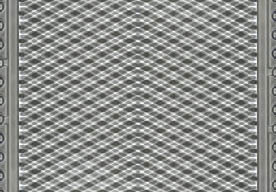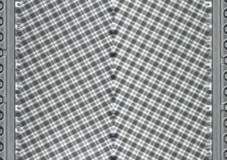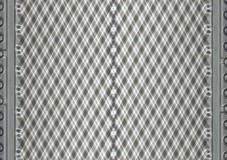Plate heat exchanger plate corrugated runner and structure analysis
We all know that the plate is the core heat exchanger plate heat exchanger element, the plate of the ripple, angle, composition of the flow channel design, as well as its own structure will have a profound impact on the efficiency of heat transfer.
Generally, there are two types of corrugations on a sheet, Low Theta and High Theta. As shown in the figure below.

High Theta and Low Theta corrugations can be combined or cross-combined to form three flow channels, which can be suitable for different working conditions, and can be customized for special working conditions.

Low Theta flow channels are suitable for low turbulence and pressure drop, mixed angle flow channels are suitable for medium turbulence and pressure drop, high theta flow channels are suitable for high Turbulence and pressure drop. The advantages of these three combinations are a variety of flow channel combinations, high heat transfer efficiency, excellent design, high shear, turbulence, not easy to Fouling buildup can improve heat recovery efficiency.

The versatility of the corrugated design provides support points on the surface of the sheet, which can now be designed up to around 0.4mm, enhancing the The strength of the plates creates a high degree of turbulence, which improves the heat transfer coefficient.
The plate construction typically includes suspension slots, inlets and outlets, conduit areas, sealing slots, leakage slots, and major heat transfer areas. This structure allows the medium to flow evenly across the surface of the plate, eliminating heat transfer dead, increasing the effective heat transfer area and improving the heat transfer efficiency. Heat exchange efficiency, not easy to scale, easy to install.
Plate heat exchanger plate ripples, runners and structural design are all designed to serve the heat exchanger itself, mainly to allow the heat exchanger to improve the heat transfer performance, to extend the service life, I believe that the plate design can be more efficient in the future.
Related information
- The methods of plate heat exchanger anti-freezing
- Don't know what are the influencing factors of the pressure drop of the plate heat exchanger? This article gives you the answer
- What is the difference between the hanging holes on the plate of plate heat exchanger?
- Several essential factors for the selection of plate heat exchanger
- Waste heat recovery heat exchanger, there’re many reasons choosing Qingdao Ruipute
- Chemical plate heat exchanger effect is not ideal reasons
Relevant article
- Heat station supporting plate heat exchanger installation is a technical work, these points should be noted
- Sulfuric acid and other corrosive media for industrial plate heat exchanger requirements are what
- Simple and effective chemical cleaning method of coal chemical plate heat exchanger, can effectively improve efficiency
- A high-quality petrochemical plate heat exchanger in the production of what to consider
- These causes of chemical plate heat exchanger gasket aging you may not know
- Chemical plant plate heat exchanger, sulfuric acid cooling needs attention
- High-end plate heat exchanger customization, specifically for your special working conditions
- The working principle of gasket type industrial plate heat exchanger and the scenarios of its use are worth knowing in depth
- Still worrying about the wholesale price of industrial plate heat exchangers? An article to make you no longer tangled
- The original lubricant in the chemical plate heat exchanger plays so many roles!
Latest information
- Heat station supporting plate heat exchanger installation is a technical work, these points should be noted
- Sulfuric acid and other corrosive media for industrial plate heat exchanger requirements are what
- Simple and effective chemical cleaning method of coal chemical plate heat exchanger, can effectively improve efficiency
- A high-quality petrochemical plate heat exchanger in the production of what to consider
- These causes of chemical plate heat exchanger gasket aging you may not know
- Chemical plant plate heat exchanger, sulfuric acid cooling needs attention
- High-end plate heat exchanger customization, specifically for your special working conditions
- The working principle of gasket type industrial plate heat exchanger and the scenarios of its use are worth knowing in depth
- Still worrying about the wholesale price of industrial plate heat exchangers? An article to make you no longer tangled
- The original lubricant in the chemical plate heat exchanger plays so many roles!








